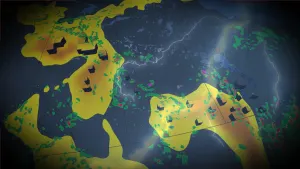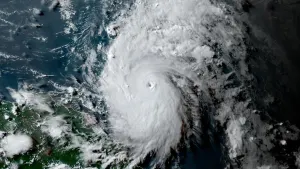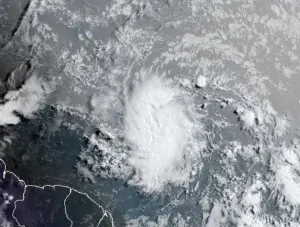
Canada unveils new climate adaptation strategy with more than $1B commitment
Canada's first climate adaptation strategy, unveiled today, commits the federal government to new targets for preventing extreme heat deaths, reversing species loss and protecting homes in flood- and wildfire-prone areas.
Environment and Climate Change Canada released the strategy — which has been almost two years in the making — in Prince Edward Island, one of the Atlantic provinces that felt the brunt of Hurricane Fiona in September.
The strategy envisions a country prepared to deal with the worst impacts of climate change. The high-level document talks about multiple targets but doesn't provide any hard numbers. Rather, its goal is to set the stage for more detailed implementation plans to be rolled out later.
See also: COP27 delivers climate fund breakthrough at cost of progress on emissions
The government also announced $1.6 billion over five years in new funding to help jump-start the work that needs to be done. The money is meant to improve disaster response, protect Canadians from extreme heat and health effects and top up the disaster mitigation and adaptation fund.
The funding required from the public and private sectors to address the impacts of climate change in Canada is estimated at $5.3 billion per year, according to the Insurance Bureau of Canada, a trade association that represents the industry.
A federal official speaking on background told reporters Thursday the new funding is a "downpayment," and acknowledged more will be required to achieve the strategy's goals.
While governments and communities have been anticipating and planning for the effects of climate change — which range from droughts and floods to permafrost loss, failing infrastructure and pressure on ecosystems — more needs to be achieved, according to the report.
"Our collective actions have often been insufficient or disjointed, and have not resulted in the swiftness and scale of adaptation that communities in Canada require," the report states.
Embedding climate change in all decision-making
In the hope of resetting the country's approach, the report rests on several pillars: disaster resilience, health and well-being, nature and infrastructure.
Without going into specifics, the strategy outlines several targets. For instance, reducing the number of people impacted or who die from floods, wildfires or extreme heat.
On the infrastructure front, the strategy calls for embedding "climate change in all decisions to locate, plan, design, manage, adapt, operate and maintain infrastructure systems across their lifecycle."

Firefighters struggle to contain a wildfire outside Lytton, B.C. on July 14, 2022. (Supplied by Daniel Mundall)
When it comes to new construction, it commits the country to new guidelines and standards, especially in areas prone to wildfires, flooding and other climate risks.
Broad targets are set for stopping and reversing nature and biodiversity loss. Indigenous communities, it states, must have opportunities to protect their traditional lands. The strategy calls for expanding urban forests and wetlands in city landscapes. These nature-based solutions have been proven to reduce emissions and minimize the impacts of flooding and heat waves on urban populations.
The strategy is meant to be a living document that the government promises will be updated every five years, along with progress reports as early as 2025.
Watch below: Canada could be at an EV tipping point
Feeling the effects of climate change
Climate change has had devastating impacts on Canadians already. In June 2021, Western Canada experienced a historic heat dome which set a record temperature of 49.6 degrees C in Lytton, B.C. A forest first would later tear through the community.
Environment Minister Steven Guilbeault called Hurricane Fiona in September "the most severe hurricane in the history of Canada. We've never seen anything like this."
"Lives were lost, and this is because of climate change," he added.
Economic analysis shows the impacts of climate change will be severe, even if the world does not exceed the international goal of limiting global warming to 1.5 degrees C. A recent United Nations report warned that the failure of individual nations to cut their emissions is "leading our planet to at least 2.5 degrees warming, a level deemed catastrophic by scientists at the Intergovernmental Panel on Climate Change."
The Canadian Climate Institute estimates that by 2025, the impact of climate change could cut economic growth by $25 billion annually. More recently, the Parliamentary Budget Officer estimated that even if the world meets its emissions reduction commitments, Canada's real GDP will take a 5.8 per cent hit in 2100.
Thumbnail image: Weeks after post-tropical storm Fiona ripped through the Hebrides cottage community on New London Bay near Stanley Bridge, P.E.I., buildings and debris still littered the countryside and shoreline. (Shane Hennessey/CBC)
This article, originally published for CBC News, was written by David Thurton.










